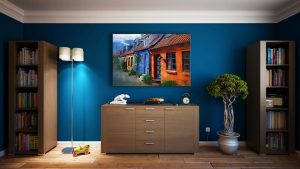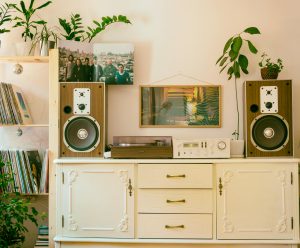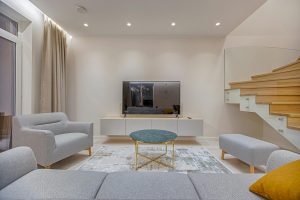Cabinets come in three main kinds: stock, semi-custom, and custom. Each kind is different because of how they’re made, how much you can change their design, what stuff they’re made from, and how much they cost. Stock cabinets use cheap materials like particleboard and laminate. They’re easy on your wallet but don’t last long. Semi-custom cabinets mix cost and quality. They use plywood and veneers for a better look and feel. Custom cabinets, like those from PNA Furniture Co., Limited, use top-notch hardwoods and fancy finishes. They’re built strong with special joints. These cabinets work great for fancy homes or busy places like hotels. Each kind has its own way of being built, finished, and fitted with hardware. Custom ones stand out for their strength and eco-friendly ways.

What Are the Three Primary Grades of Cabinets and How Are They Classified?
Cabinets fall into three groups: stock, semi-custom, and custom. These groups depend on how tricky they are to make, how much you can tweak the design, what materials they use, and their price.
Stock Cabinets
Stock cabinets are made in big batches. They come in set sizes, colors, and styles. You can get them fast, but you can’t change much.
Semi-Custom Cabinets
Semi-custom cabinets give you more choices. You can adjust sizes a bit and pick from more colors or finishes. But you’re still stuck with some set designs.
Custom Cabinets
Custom cabinets are made just for you. Every part fits your needs. PNA Furniture Co., Limited, a company started in 2010, makes unique furniture for fancy homes, hotels, and offices. Their grading isn’t only about price. It’s about making sure every piece is strong and well-designed.
People in the cabinet business judge quality by how well cabinets are built, how smooth their finishes are, and how tough their hardware is. But every company has its own rules, so grades can vary.
What Materials Define Each Cabinet Grade?
The stuff cabinets are made of changes how good they are. Each kind uses different materials to balance price, looks, and strength.
Stock Cabinets Use Economical Materials That Prioritize Cost Over Longevity
Stock cabinets use low-cost stuff like particleboard or MDF. These are light and cheap. But they don’t handle water or wear well. Their surfaces often have melamine or laminate. These work okay but don’t look as nice as real wood.
Semi-Custom Cabinets Strike a Balance Between Durability and Aesthetics
Semi-custom cabinets are a step up. They might use plywood for sides or hardwood for front frames. Inside, they may still have some cheaper wood. This makes them stronger and better-looking than stock ones.
Custom Cabinets Showcase Premium Materials That Reflect Luxury Craftsmanship
Custom cabinets use the best materials. Think solid hardwoods, marine-grade plywood, and carefully picked veneers. PNA’s custom sideboard cabinets mix steel and wood. They add hand-done finishes for a fancy look and long life.

How Do Construction Techniques Impact Structural Integrity?
How cabinets are put together matters a lot. It affects how strong they are. Different building tricks and joints make cheap cabinets different from fancy ones.
Different Framing Methods Separate Budget from High-End Cabinets
Stock cabinets often have no frame or thin face frames. These can’t hold much weight. Semi-custom cabinets may use thicker frames. But they sometimes use simple joints to save time.
Joinery Quality—From Screws to Dovetails—Defines Longevity
Cheap cabinets use basic joints, like glue or screws. These aren’t very strong. Better cabinets use dovetail joints or dowels. They hold up better and look nicer. PNA cares about every detail. Even their screws are placed carefully for comfort and strength.
How Does Finish Quality Vary Across Grades?
Finishes change how cabinets look and how long they last. Each kind uses different coatings, from simple ones to fancy stains.
Lower-Tier Cabinets Rely on Laminate or Thermofoil Finishes
Stock cabinets use laminate or thermofoil surfaces. These keep stains away but can peel or fade over time. They’re fine for a short while but don’t have the warm look of wood.
Veneers Offer a Middle Ground; Solid Wood Finishes Define Luxury
Semi-custom cabinets often use wood veneers over cheaper cores. This looks better than laminate and costs less than solid wood. Custom cabinets use hand-applied stains on real wood. These finishes age nicely and add class. PNA’s hand-polished finishes, even on metal, shine like a mirror. They match the best brands out there.
What Role Does Hardware Play in Cabinet Quality?
Hardware, like hinges and drawer slides, affects how cabinets work and how long they last.
Entry-Level Hardware Is Functional But Often Lacks Durability
Basic hinges and slides in stock cabinets wear out fast. Soft-close features aren’t common unless you pay more.
High-End Cabinets Feature Precision Hardware That Enhances Functionality
Fancy cabinets have better hardware. Think full-extension drawer slides and hidden hinges that close softly. PNA goes further. They treat metal parts with tough coatings, like those used in the military, to last through heavy use.
Can You Customize Cabinets Based on Your Space?
How much you can change a cabinet’s design depends on its kind. Each type offers different levels of freedom.
Stock Dimensions Limit Flexibility Significantly
Stock cabinets come in fixed sizes. If your space doesn’t fit, you’ll need fillers or weird tweaks. These can look odd.
Semi-Custom Offers More Design Freedom Without Going Fully Bespoke
Semi-custom cabinets let you change sizes a little or pick from more colors. But you’re still limited to certain designs.
Full Customization Unlocks True Luxury Cabinet Design Potential
Custom cabinets are built to match your space and style perfectly. PNA makes this simple. They give free CAD drawings in 72 hours. Their no minimum order quantity (MOQ) policy lets you try unique designs without worry. This is great for fancy projects.
Are Sustainable Practices Reflected in Premium Cabinets?
Eco-friendly ways are more common in high-end cabinets. Cheaper ones often skip these efforts.
Low-Grade Options Often Use Non-Eco-Friendly Materials
Budget cabinets may have harmful stuff like formaldehyde or VOCs in their glues and finishes. These can be bad for your health over time.
Premium Brands Embrace FSC Certification & Low-VOC Finishes
Top brands use woods from responsibly managed forests. They also use safe, water-based finishes. These are better for the planet and your home. PNA uses eco-friendly engineered woods when they can. This keeps costs down without hurting the environment.

How Does Each Grade Perform Over Time?
How long cabinets last depends on how well their materials handle water and daily use.
Durability Depends on Material Resistance to Moisture & Daily Use
Stock cabinets may warp or peel in wet places. Semi-custom ones do better but still need careful care.
Long-Term Value Comes From Investing in Craftsmanship Over Short-Term Savings
Custom cabinets cost more at first. But they save money over time. They need fewer fixes and stay stylish longer. PNA’s handmade cabinets last up to five years longer than machine-made ones. This makes them perfect for fancy projects where looks and strength both matter.
FAQ
Q1: Which cabinet grade should I choose for a high-traffic commercial project?
A: Pick custom-grade cabinets. They use strong materials and tough joints. PNA’s commercial furniture comes with an 18-month warranty. This ensures they hold up in busy places.
Q2: Can I get luxury cabinet design without ordering large quantities?
A: Yes. PNA’s zero MOQ policy lets you order single pieces. This works for small renovations or unique projects.
Q3: How long does it take from design approval to delivery?
A: Usually 45 days from when you confirm your deposit. PNA can speed things up. They can deliver prototypes in two weeks without skimping on quality.





